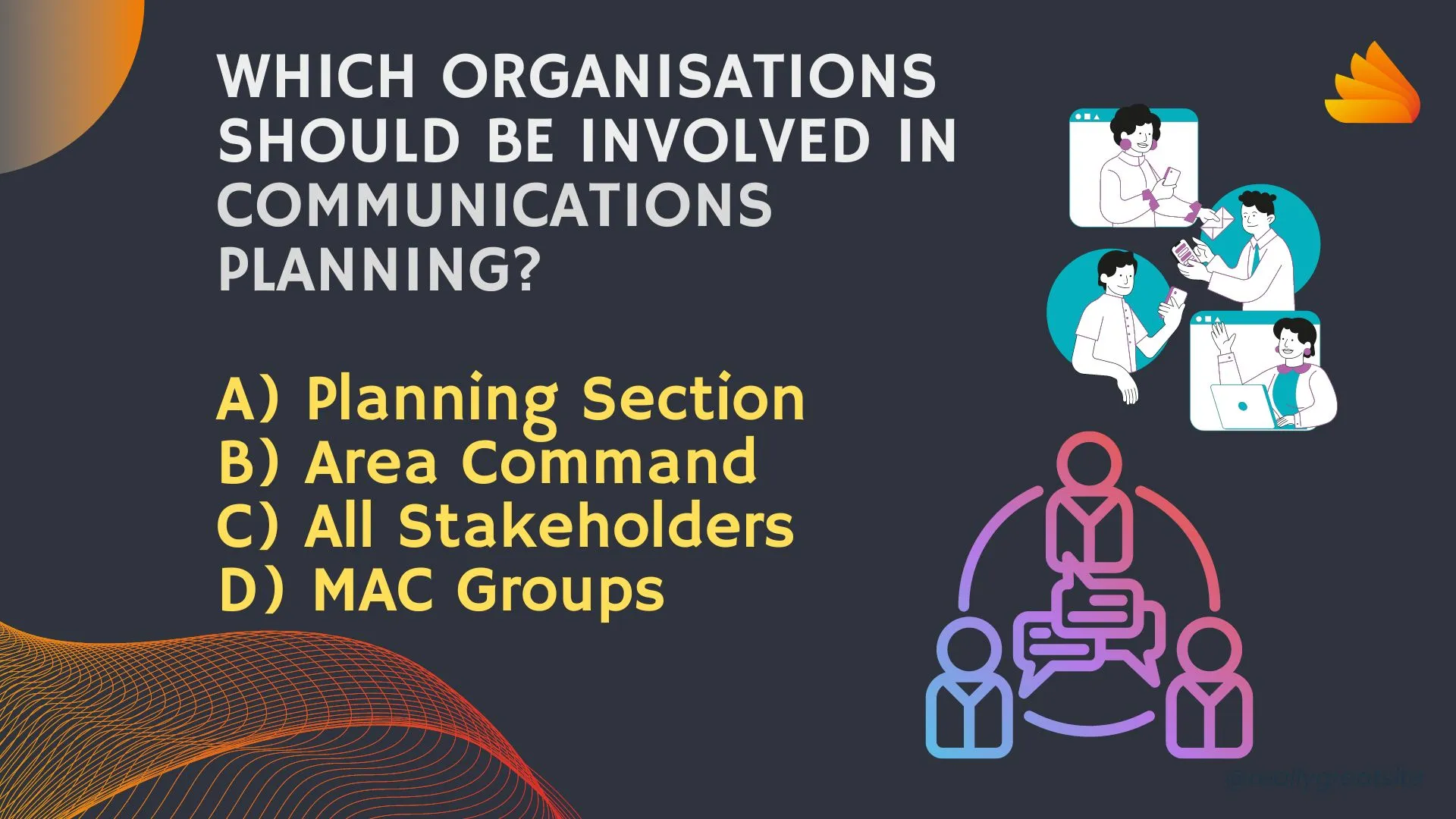Table of Contents
Which organisations should be involved in communications planning?
A) Planning Section
B) Area Command
C) All Stakeholders
D) MAC Groups
The Correct Answer for the given Question is C) All Stakeholders
Why stakeholders must be included in communications planning?
Stakeholders should be involved in communications planning because they have an interest in the project or initiative being discussed. They may be affected by the project or have an impact on its success, and as a result, they must be kept informed and involved throughout the communication process.
Involving stakeholders in communications planning can help ensure that their needs and concerns are addressed, their opinions are taken into account, and the communication is tailored to their interests and preferences. It can also aid in the development of trust and buy-in for the project, as stakeholders are more likely to support efforts that are effectively and honestly conveyed to them.
Which organisations should be involved in communication planning?
Communication planning involves various organisations that are directly or indirectly involved in the project. Some of the key organisations that should be involved in communication planning are:
Project team: The project team is in charge of organising, carrying out, and keeping track of the project. To make sure that all communication initiatives are in line with the project goals, they should be included in the communications planning process.
Stakeholders: Stakeholders are people or organisations that are interested in the success of the project. To make sure they are updated on project progress and that their concerns are taken into account, they should be included in the communications planning process.
Communication Team: The team in charge of communications is in charge of creating and carrying out the communications plan. To make sure the plan is successful and satisfies the project’s requirements and must be included in the communications planning process.
Senior management: Senior management is in charge of supervising and guiding the project. To make sure that the project’s communications efforts are in line with the organisation’s broader strategy, they should be involved in the communications planning process.
External partners: The project may involve external partners, including vendors, Merchant Wholesalers, and contractors. To make sure they are informed of the project goals and their roles in achieving those goals, they should be involved in the communications planning process.
Advantages of involving Stakeholders in planning
Involving stakeholders in communication planning has several advantages, including:
- Improved understanding: Involving stakeholders in communication planning helps them better understanding the overall project’s goals, objectives and constraints. This will lead to better decision making and improves communication.
- Increased buy-in: Whenever stakeholders feel involved in the planning process, they are more likely to be invested in the project’s success. This can lead to increased buy-in and support for the project, making it easier to gain project goals.
- Enhanced collaboration: Communication planning involves many different teams and departments including stakeholders within an organisation which helps better collaboration towards achieving the set goals.
- Better risk management: When stakeholders are involved in communication planning they can have clear sight of the project which helps to determine the potential project risks. This will help in planning earlier for risk management.

